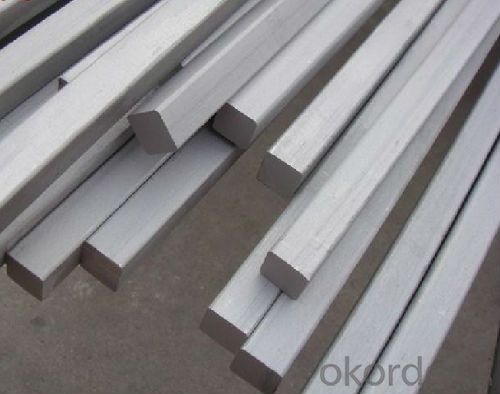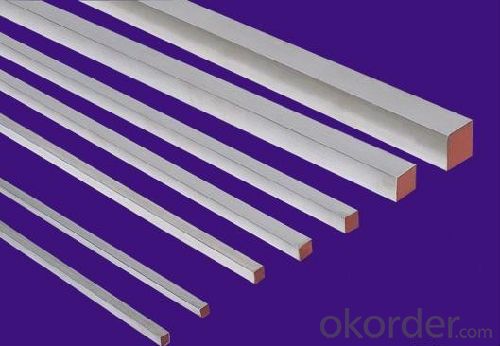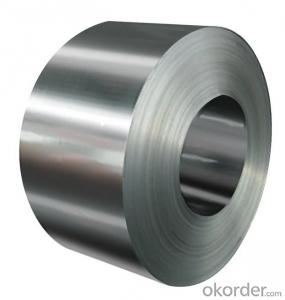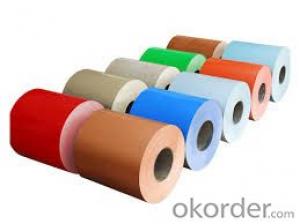Stainless Steel Strip Hot Rolled Type Steel Coil
- Loading Port:
- Qingdao
- Payment Terms:
- TT or LC
- Min Order Qty:
- 50 m.t.
- Supply Capability:
- 50000 m.t./month
OKorder Service Pledge
OKorder Financial Service
You Might Also Like
Stainless Steel Strip Hot Rolled Type Steel Coil
Main Structure of Steel Strip
1>Thk:0.1mm-50mm
2>Width:100mm-3000mm
3>Length:Coil
4>Surface:BA,2B,No.1,No.4,HL,8K etc
Specification of Steel Strip
Commodity | China good stainless steel strip/tape | ||
Description |
Steel Coil/Stainless Steel Coil/Hot Rolled and Cold Rolled Stainless Steel Coil | ||
Standard |
ASTM A240, JIS G4304, JIS G4305, EN10028 etc | ||
Series |
200 Series |
300 Series |
400 Series |
Material |
201,202 | 301,304,304L,TP304,TP304L,309S,310S, 316,316L,TP316,TP316L,317L,321,347, TP321,TP347,321H,347H | 405,409,410,410S, 420,430 |
Thickness |
0.1mm-50mm | ||
Width |
1000mm,1219mm,1250mm,1500mm,1800mm,2000mm,2500mm,3000mm etc | ||
Length |
Coil or as demand | ||
Manufacture Type |
Hot Rolled, Cold Rolled | ||
Surface Treatment |
BA,2B,No.1,No.4,No.8,Hair Line,Mirror Finish,Embossed | ||
Packaging |
Wooden Case,Pallet Wooden,20'GP or 40'GP Container | ||
Application of Steel Strip
Stainless Steel Coil is widely used in Container,Shipping,Machine Manufacture,
Kitchen and Hardware Tools,Oil and Chemical Industry,Food and Medical Industry,
Agricultural and Light Industry,Surgical Knife etc
FAQ:
Q:How about your quality?
A:Quality is our culture, our products has to be checked with engineer, QC and sales, customer together, The products’ qualified rate need to be over 95%.
Pictures



- Q:How are steel coils used in the manufacturing of automotive components?
- Steel coils are used in the manufacturing of automotive components by being processed and shaped into various parts such as body panels, frames, suspension components, and engine parts. The coils are typically cut, formed, and welded to create the desired shape and strength required for each specific component. The use of steel coils allows for the production of durable, strong, and cost-effective automotive parts that meet the industry's high standards for safety and performance.
- Q:What are the factors affecting the corrosion resistance of steel coils?
- There are several factors that can affect the corrosion resistance of steel coils. These factors include the composition of the steel, the presence of impurities or alloying elements, the surface finish or coating on the coils, the environmental conditions such as humidity and temperature, and the presence of corrosive chemicals or substances in the surrounding atmosphere. Additionally, factors such as handling and storage practices can also impact the corrosion resistance of steel coils.
- Q:What are the different types of steel coil slitting blades?
- There are several different types of steel coil slitting blades, including circular slitting blades, crush cut slitting blades, and razor slitting blades. Each type has its own unique design and is used for specific applications in the steel coil slitting process. Circular slitting blades are commonly used for high-speed slitting and provide precise and smooth cuts. Crush cut slitting blades are designed to crush and shear the material, making them suitable for cutting delicate or fragile materials. Razor slitting blades have a sharp edge that slices through the material, making them ideal for thicker or tougher materials. Overall, the choice of blade type depends on the specific requirements of the slitting process and the type of material being cut.
- Q:How are steel coils inspected for quality control?
- Steel coils are inspected for quality control through various methods. One common method is visual inspection, where trained professionals visually examine the coils for any surface defects, such as scratches, dents, or discoloration. Additionally, non-destructive testing techniques like ultrasonic testing are used to detect any internal defects, such as cracks or voids. Dimensional measurements are also taken to ensure the coils meet the required size and thickness specifications. These comprehensive inspections help ensure the overall quality and integrity of steel coils before they are used in various industries.
- Q:What are the typical coil width options?
- The typical coil width options vary depending on the specific application and industry. However, common coil width options range from 1 inch to 72 inches or even wider.
- Q:How are steel coils inspected for camber using laser profiling?
- Steel coils are inspected for camber using laser profiling, which is a non-contact measurement technique. Laser profiling involves the use of a laser beam that is emitted onto the surface of the steel coil. As the laser beam moves across the coil, it creates a profile of the coil's surface, capturing precise measurements. To inspect for camber, the laser profiling system scans the entire length and width of the coil, capturing data points at regular intervals. These data points are then analyzed to determine the deviation from a straight line, which indicates the presence of camber. During the inspection process, the laser profiling system compares the measured profile of the steel coil to a reference profile, which represents an ideal or straight surface. The deviation between the measured profile and the reference profile is calculated, and if this deviation exceeds a predetermined threshold, the coil is flagged as having camber. Laser profiling offers several advantages for inspecting steel coils for camber. Firstly, it provides a non-contact measurement, eliminating the need for physical contact with the coil and reducing the risk of damage. Additionally, laser profiling is highly accurate, capable of capturing even small deviations in the coil's surface. This ensures that camber is detected reliably, allowing for necessary corrective actions to be taken. Overall, the use of laser profiling for inspecting steel coils for camber ensures efficient and accurate detection of this defect, enabling manufacturers to maintain high-quality standards and deliver reliable products to customers.
- Q:How do steel coils contribute to energy performance in buildings?
- Steel coils contribute to energy performance in buildings primarily through their use in HVAC systems. Steel coils are commonly used in heating, ventilation, and air conditioning (HVAC) systems as heat exchangers or condenser coils. These coils help in transferring heat between the indoor and outdoor environments, allowing for effective heating or cooling of the building. The high thermal conductivity of steel enables efficient heat transfer, optimizing energy usage and enhancing the overall energy performance of the building. By facilitating appropriate temperature control and reducing energy consumption, steel coils play a vital role in improving the energy efficiency of buildings.
- Q:What are the advantages of using steel coils?
- There are several advantages of using steel coils. Firstly, steel coils are highly durable and have a longer lifespan compared to other materials, making them ideal for long-term use. Additionally, steel coils have excellent strength-to-weight ratio, allowing them to withstand heavy loads without compromising structural integrity. They also provide superior resistance to corrosion, making them suitable for various environments, including high humidity or coastal areas. Furthermore, steel coils can be easily recycled, making them an environmentally friendly choice. Overall, the advantages of using steel coils include durability, strength, corrosion resistance, and sustainability.
- Q:and which one is better?i'm looking into buying some aftermarket headers, but companies make them in both chrome and stainless steel
- I know nothing of aftermarket headers so can't help you there, but - chrome is a coating on metal. Stainless Steel is a type of metal.
- Q:I juuuust got a new stainless steel sink only 5 months ago, and it already has a couple rust spots on it.What caused this?!
- Use a soft cloth or nylon sponge and a little bit of detergent on the spot. Do not use bleach, chlorine or otherwise. If this does not work, try a little baking soda. Always rince out the sink after you use it, soap film can leave a rainbow looking mark in the stainless steel. I take everything out of the sink after I wash dishes. I use a small amount of veg oil on a paper towel to shine up the sink.
1. Manufacturer Overview |
|
|---|---|
| Location | |
| Year Established | |
| Annual Output Value | |
| Main Markets | |
| Company Certifications | |
2. Manufacturer Certificates |
|
|---|---|
| a) Certification Name | |
| Range | |
| Reference | |
| Validity Period | |
3. Manufacturer Capability |
|
|---|---|
| a)Trade Capacity | |
| Nearest Port | |
| Export Percentage | |
| No.of Employees in Trade Department | |
| Language Spoken: | |
| b)Factory Information | |
| Factory Size: | |
| No. of Production Lines | |
| Contract Manufacturing | |
| Product Price Range | |
Send your message to us
Stainless Steel Strip Hot Rolled Type Steel Coil
- Loading Port:
- Qingdao
- Payment Terms:
- TT or LC
- Min Order Qty:
- 50 m.t.
- Supply Capability:
- 50000 m.t./month
OKorder Service Pledge
OKorder Financial Service
Similar products
New products
Hot products
Hot Searches
Related keywords




























